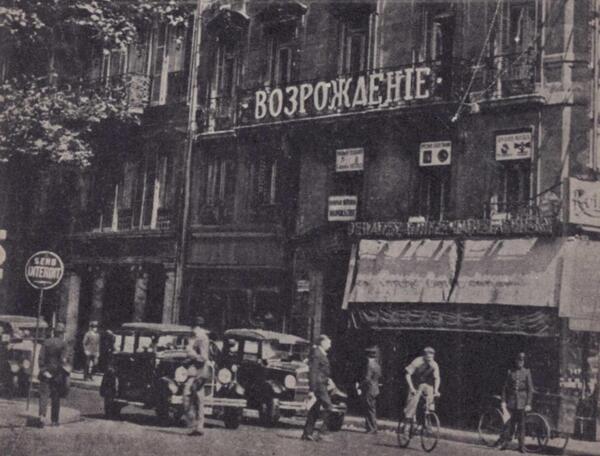The photo on the postcard, which belonged to an unknown author, shows the Paris-based publishing house ‘Vozrozhdenie’ (Renaissance). On December 14, 1950, Ivan Bunin’s book “Memoires” was published by the “Vozrozhdenie”.
The book is a collection of sketches written in various years. Bunin recreated the atmosphere of that epoch and included portraits of his contemporaries. They were printed on the pages of various emigrant publications, some of the sketches were published titled “Autobiographical notes” in the newspaper “Novoe Russkoe Slovo” (“New Russian Word”) in New York.
Bunin began to work on the book in the last years of life, when he had to stay in Paris all the time. All his diseases — cardiac asthma, lung emphysema, as well as sleepless nights due to painful breathlessness — forced the writer to think about death. It was getting more difficult for him to move around the city. His world was gradually getting smaller: first it was Paris, then the streets close to his house, his apartment and at last, his room. The smaller the spaces became, the more he relied on his memory.
The “Memoires” include many portraits-sketches of his great contemporaries: the portraits of Rachmaninoff, Repin, Jerome K. Jerome, Leo Tolstoy, Aleksey Tolstoy (“The Third Tolstoy”), Chekhov, Chaliapin, Gorky, Prince Peter of Oldenburg (“His Highness”), Kuprin, Ertel, Voloshin, and Mayakovsky. The book also included essays “The Semenov and Bunin Families”, “Hegel, tailcoat, snowstorm” and “The Nobel Days”.
As Russian literary critic Yuri Maltsev once remarked:
The book is a collection of sketches written in various years. Bunin recreated the atmosphere of that epoch and included portraits of his contemporaries. They were printed on the pages of various emigrant publications, some of the sketches were published titled “Autobiographical notes” in the newspaper “Novoe Russkoe Slovo” (“New Russian Word”) in New York.
Bunin began to work on the book in the last years of life, when he had to stay in Paris all the time. All his diseases — cardiac asthma, lung emphysema, as well as sleepless nights due to painful breathlessness — forced the writer to think about death. It was getting more difficult for him to move around the city. His world was gradually getting smaller: first it was Paris, then the streets close to his house, his apartment and at last, his room. The smaller the spaces became, the more he relied on his memory.
The “Memoires” include many portraits-sketches of his great contemporaries: the portraits of Rachmaninoff, Repin, Jerome K. Jerome, Leo Tolstoy, Aleksey Tolstoy (“The Third Tolstoy”), Chekhov, Chaliapin, Gorky, Prince Peter of Oldenburg (“His Highness”), Kuprin, Ertel, Voloshin, and Mayakovsky. The book also included essays “The Semenov and Bunin Families”, “Hegel, tailcoat, snowstorm” and “The Nobel Days”.
As Russian literary critic Yuri Maltsev once remarked:


